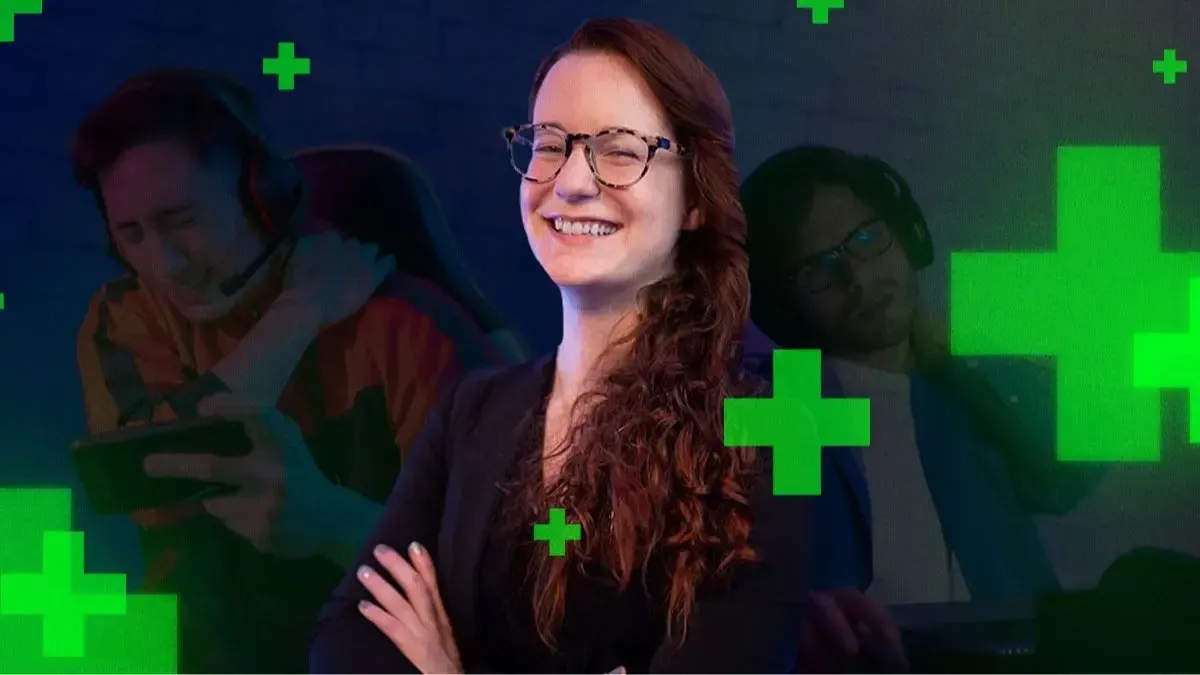What can organisations do to avoid esports injuries? We talked to Caitlin McGee from 1HP to find out.
Injuries in esports aren’t something fans are likely to think about until it’s too late. Faker famously had to step down during the LCK Summer Split last year due to an arm injury, after which his team lost five out of their next six games. Injuries are clearly a problem the industry still has to deal with, despite the fact that teams and players have had years of experience to properly deal with them. For comparison, running athletes have to practice careful habits in the weeks of training leading up to a marathon just to avoid burning out or worse. The world of Japanese manga is infamous for its overworked and sickly creators, which inevitably affects the quality and release cadence of their work.
Creating manga isn’t a sport, of course - but much like esports players in training, the job requires a lot of focus and little-to-no movement for extended blocks of time. Everything from an athlete's posture to their gaming setup can have an impact on their long-term health in the industry. Fortunately, the physical therapy organisation 1HP is not only well-versed in the ever-looming threat of esports injuries, but dedicated to their prevention. We talked to 1HP’s co-founder Dr. Caitlin McGee, physical therapist to find out more about what her organisation does, what most gamers can do to stay pain-free, and what keeps her going after seven years at the company.
Who is Dr. Caitlin McGee?
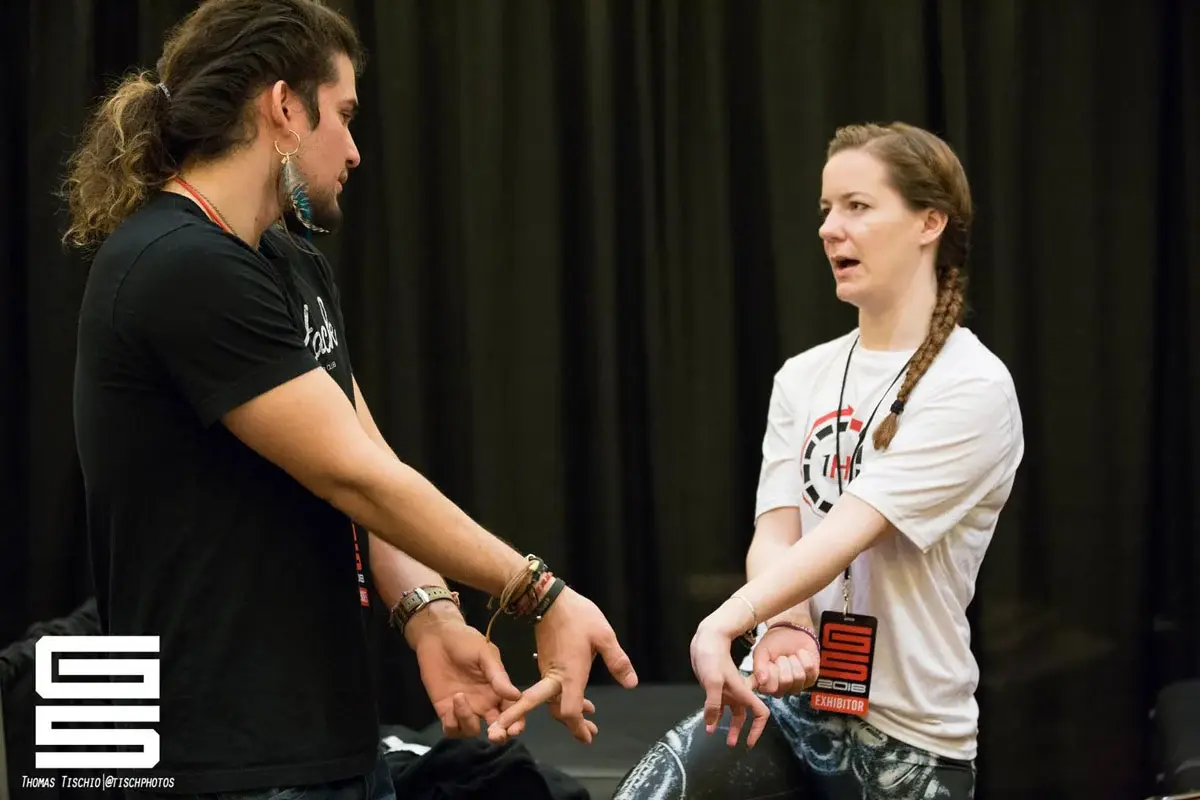
Dr. Caitlin McGee, PT, DPT co-founded the physical therapy organisation 1HP seven years ago, but she isn’t ready to start winding things down just yet. The simple fact is that she loves video games, and 1HP provides an opportunity for her to engage with the gaming community from a slightly different perspective than most. To get her start in physical therapy, she first picked up an undergraduate degree in exercise, sports science and neuroscience, as well as what she calls, “an accidental bio minor because I took so many science courses,” and then, “an accidental master's degree as well, because I took some extra classes when I was doing my doctoral.” So… qualifications: check!
With both a science-based and athletic background - having also played soccer and competed for her college team - she first heard of esports while staying with a friend, who allowed her to crash with them on the condition that they would play games all weekend. There, she was introduced to Dota and jumped right into doing in-game stats for it, which eventually led to her having a presence at actual esports tournaments. After coming back from these tournaments with boundless complaints about the ergonomics on display, she began writing ergonomics guides and talking to players personally. “So I put myself where people were going to be, and made it convenient to ask questions about their hands or their posture,” she explains. Seven years ago, she met another physical therapist named Matthew Hwu, and the two co-founded 1HP.
Does she still keep up with Dota 2, after all these years? “I do,” she nods enthusiastically. “Not as much as I used to. One of the downsides of working more in eSports is that you have less time to play games. And also to be fair, I've been on a Baldur’s Gate 3 binge recently.” It took her six tries to finish Honour Mode. She still plays all of her favourites: Dota 2, Super Smash Bros., Street Fighter and Injustice - which means that there is, at least, still a bit of time left after work for gaming.
She mains Marth in Smash, after frustratingly being unable to make Dr. Mario work - “He's just so not viable competitively, that there just wasn't a way.” - and Chun-Li in Street Fighter. Seeing as her work is so deeply rooted in esports, she tries, “to take the time to play just about every game I've ever worked with. This does not mean that I am good at every game I've ever worked with. But I want to share some understanding of what the players deal with and be better equipped to give good care to players.” For her own enjoyment, however, she’s been playing a lot of LEGO Star Wars games and God of War: Ragnarok. In fact, she loved God of War so much that she picked up a new console just to play the new one.
1HP is the rare organisation that brings the worlds of physical therapy and gaming together, but one only has to look at its co-founder to see how naturally such an idea came to fruition.
Injuries in esports
Injuries can rack up for esports athletes if they’re not careful about their posture, gaming time and even their diet. Sitting in one place and playing a single video game for hours on end might be training-efficient, but that efficiency breaks down the second an athlete begins to burn out in either body or mind. Wrist and arm issues can prove detrimental to an esports team, as they can take valuable players out of play when they’re needed the most during tournaments. A 2022 study on injuries among collegiate esports athletes found that out of 41 athletes studied, the most common esports-related injury was to the wrist with 25 total injuries, followed by the neck, back, finger, hand, elbow and thumb.
The same study noted that the esports players who trained for longer hours and had more years of experience were more likely to have experienced an injury. However, only a few of these injured players had to suffer such harsh consequences as missing tournaments or needing surgery. This study is directed at college athletes specifically, but it more or less reflects the reality of actual esports competitions. When injuries are left unchecked on the main stage however, they absolutely can and do push an athlete out of play - just look at Fnatic's Freddy ‘KRIMZ’ Johanson, who was forced to step back from Counter-Strike after suffering a pinched nerve in his hand in 2022. He eventually returned to play for the team, but you know the old saying: prevention is better than cure.
How 1HP works to keep esports pain-free
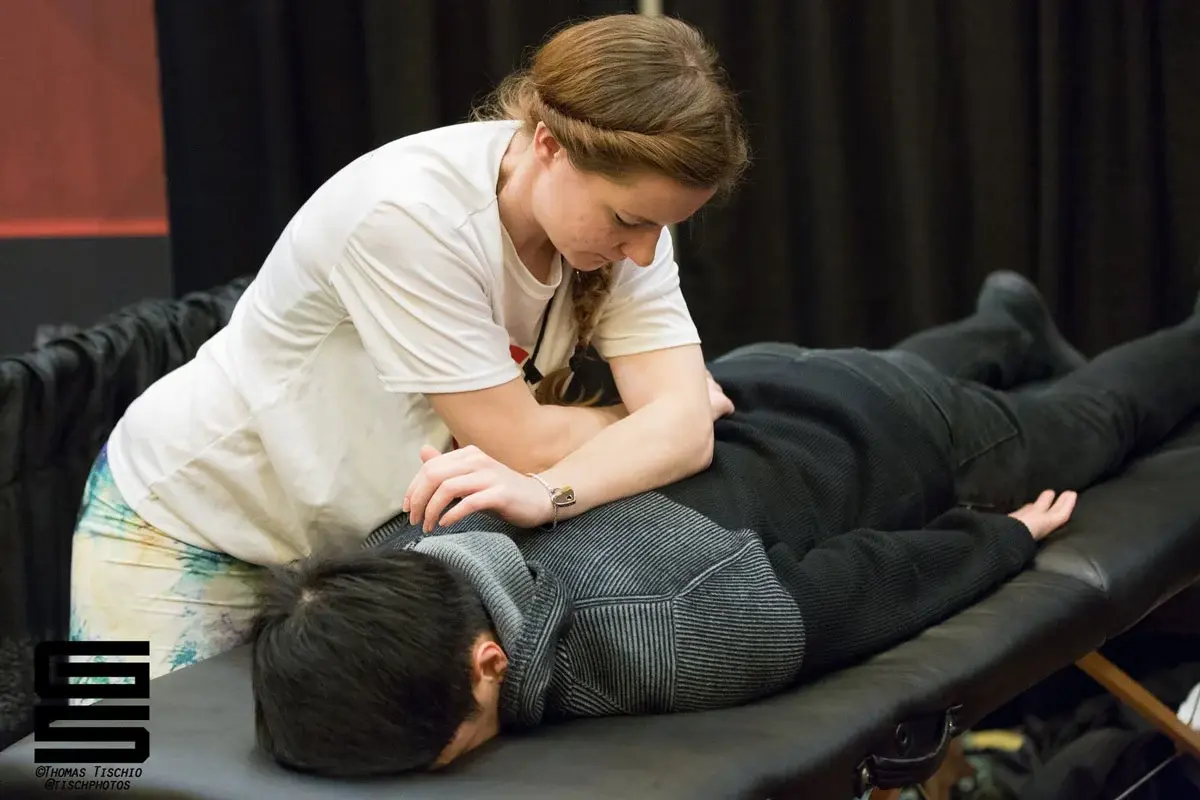
1HP is an organisation made up of medical professionals and avid gamers who specialise in helping other gamers - casual or competitive - to play as much as they like without getting hurt in the process. The team has partnered with esports leagues and major companies like ESPN and Riot Games to do so, but individual players and colleges are also on its radar. This brand of medical assistance isn't as simple as tips on good posture, however. 1HP’s focuses on five main pillars of health: physical maintenance, sleep, nutrition, mental performance and balance to prevent injuries from happening at all.
Caitlin McGee is 1HP’s co-owner and director, as well as one of the company’s physical therapists. We sat down with her to talk about the space 1HP occupies in the worlds of esports and physical therapy. In regards to her co-owner position at 1HP, Caitlin tells us that she does, “a lot of administration and back end work, including our contracts. I do a lot of our work with colleges and schools in terms of liaising with them, helping to set up new programmes with them, and then helping sometimes with curriculum development, as well as supporting the sports teams directly.”
She’s also heavily involved in developing content for 1HP’s ongoing education platform, but otherwise takes on more remote work while the rest of the team in Los Angeles, America, put their boots on the ground. When the team does consultations with individual players or teams looking to keep themselves comfortable in training, there is a larger focus on making specific changes to their lifestyle - some as simple as ensuring water is always available during training sessions - but during a tournament, things are markedly different. Caitlin says:
“… If we're seeing you at a tournament, I don't want you to change anything, I don't want you thinking about a new posture that you should be in, or changes you should make to your ergonomic setup, or exercises you're going to need to do for your hands in the future. At a tournament, your focus should be on competing. When I'm working with players at tournaments, my job is to keep them competition-ready. The time to make long-term sustainable changes is after the tournament. Because as soon as you're not thinking about competing and performing, you are not competing and performing at your best. Your focus needs to be on your play there.”
At tournaments, 1HP focuses on, “more manual therapy, soft tissue work, guided meditation, nutritional support, sleep support - that kind of thing, to make sure players are optimised,” for their upcoming matches. She points out that in traditional sports, there is a specific model for injuries and subsequent recoveries players can learn from just by watching other players, but esports doesn’t necessarily have the same structure to fall back on. “Most of the time, we only hear people talking about pain or injuries when their pain or injuries are so severe that they need to take time off or retire,” Caitlin notes.
There is a troubling pattern of injuries not being taken and addressed as seriously in esports as they are in traditional sports. That isn’t entirely the fault of esports organisations, as Caitlin explains, “there's a dichotomy of players who tend to think of pain as: ‘This means that I'm grinding enough to actually improve’, like a mark of honour almost, or as something that's kind of inevitable.” Esports players just play through the pain and hope to ward it off as long as possible until it’s simply too late.
But Caitlin notes that there has been a noticeable paradigm shift around the concept of injuries in gaming. “Players realise that they don't just have to deal with this,” she says. Pain doesn't have to be a mark of honour, but rather a sign that something needs to change.
Simple things gamers can do to fix their aches and pains
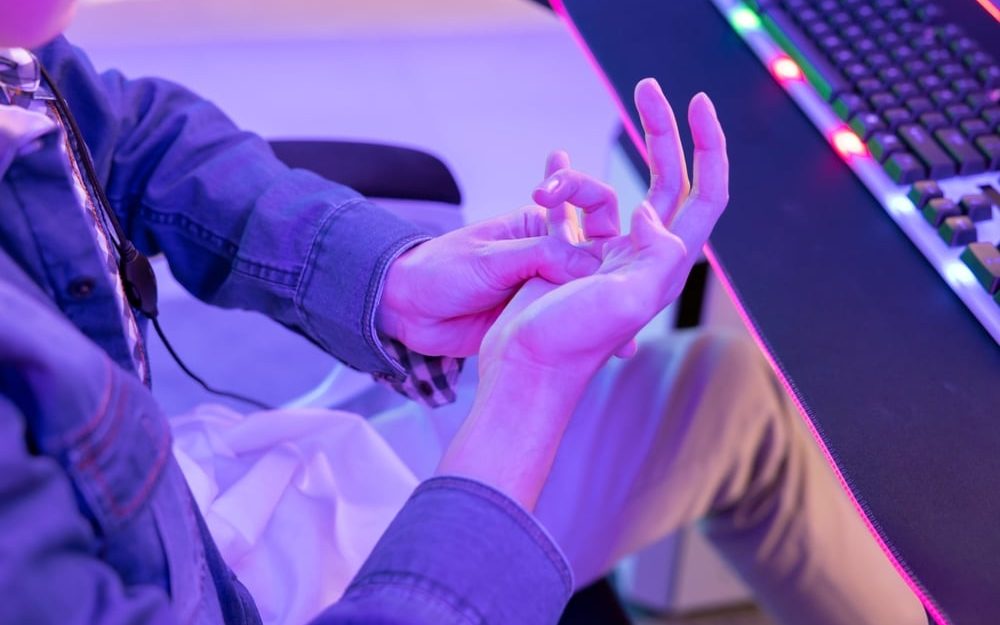
Let's be clear about this: casual gamers aren’t exempt from the dangers of gaming injuries either. If you’ve spent all night playing Dota 2 or League of Legends, not only do you have more mental fortitude than me, but you’ve likely had to deal with annoying neck pains and hand cramps the following day. You might shake the pain off and hope to feel better eventually, but what happens when you end up feeling worse instead? We asked Caitlin what the single biggest offender of gaming-related injuries is and unsurprisingly, it’s poor posture:
“The biggest one is just sitting for long periods. We used to think that back pain was more associated with sitting in particular bad postures. The more recent research shows us that that's really not the case at all, and that there is no one single best posture. There's a variety of postures that are functional for any given thing that someone is doing [...] Consistently moving around and changing position has been shown to be significantly better.”
Sitting down for long periods of time is something most people with desk jobs or indoor hobbies likely struggle with, but Caitlin argues that all you need to do is, “just stand up every so often, or change what kind of sitting position you're in.” It's not all about poor posture however, as Caitlin also notes that inadequate hydration can be just as damaging. “The more convenient you make it to engage in healthy behaviour, the more likely you are to engage in it, which is why I keep a water bottle next to my desk. If it's there, I will drink it. It's a thing that we do with all of our teams as well. One of the first changes we would make is to the practice room, so every player's station now has a water bottle sitting there.”
Even the simplest changes can sound overwhelming, which is why Caitlin also cautions moderation in tweaking your daily habits. “There's so much information out there about the best kind of nutrition and exercise,” she says. Trying to optimise everything you do is, “a great way to flame out when it comes to changing health behaviours. When we’re working with players, a lot of what we have to do is make sure we're doing a more moderate level of intervention.” She argues that someone might want to start going to the gym five days a week for the sake of efficiency, and then give up after a week. That’s where a lack of moderation can turn into a problem.
Verdict
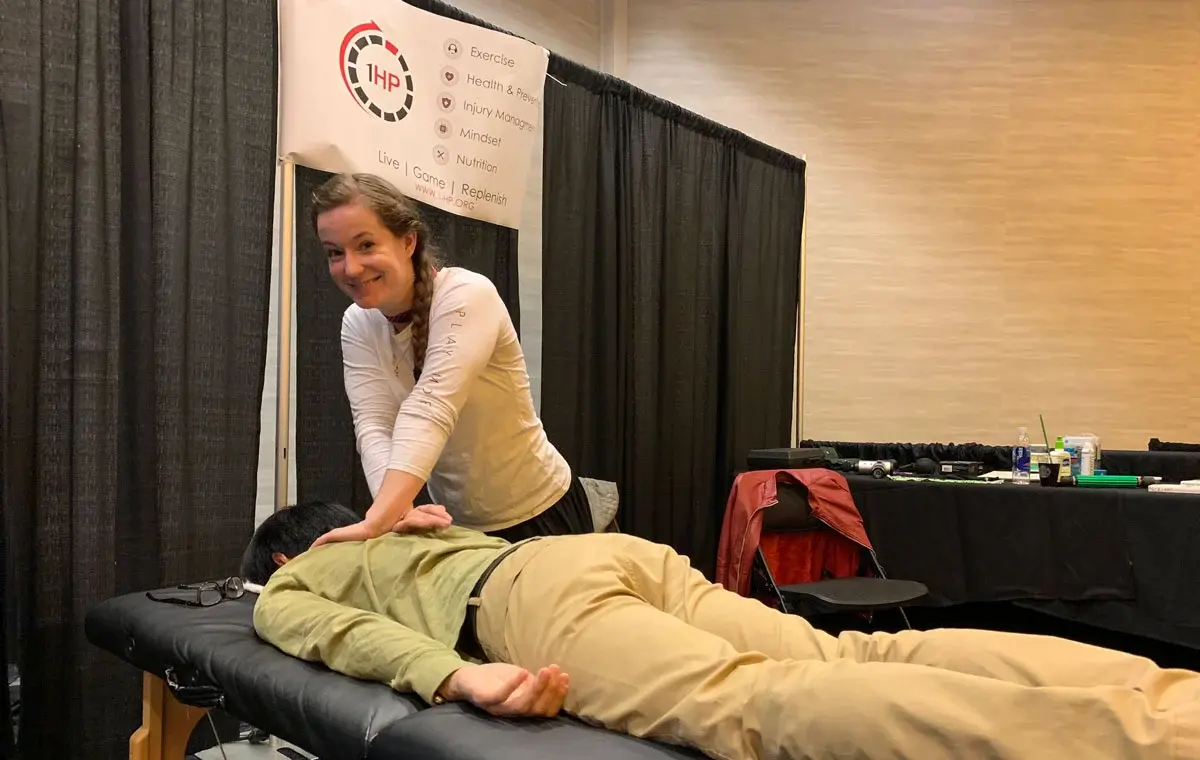
Caitlin McGee’s work at 1HP has and will continue to help casual gamers and esports athletes deal with their gaming injuries by preventing them from happening altogether. The organisation’s very existence has led to growing awareness of the importance of physical therapy in esports, though the industry still has a ways to go in taking the problem seriously. According to Caitlin, “There is significantly more interest and awareness nowadays. The players and coaches are better informed. There's a lot more caretaking about health. The only caveat to more teams engaging with healthy behaviours nowadays is the money pulled out of esports. Teams might want to engage in healthy behaviours, but they cannot afford to pay people to do things.” She continues:
“The problem is, there's always a new kid to throw in there and burn up. There's always someone to replace those with. So why would you spend more money to take better care of them, when you could just replace them next season? I think it's really in the industry's best interest to take better care of players, both in terms of quality of play, and in terms of longevity of careers.”
Ultimately, being aware of a problem can only take players so far. Once the esports industry starts paying proper attention to the health of its players, we could see injuries like these fade out of regularity - both for athletes, and fans watching them at home. You can find out more about 1HP via their website here.

